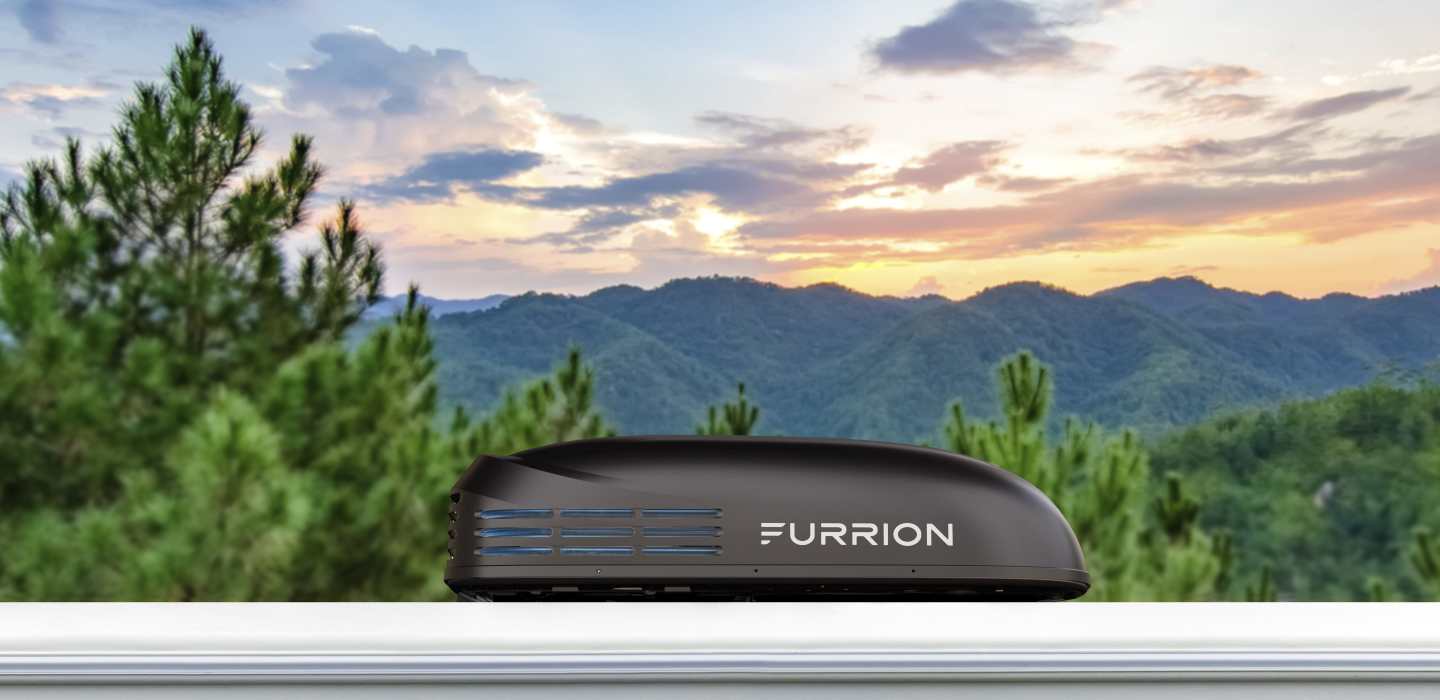When it comes to keeping your RV cool and comfortable, your air conditioner does a lot of heavy lifting. But not all RV AC units are created equal, especially when it comes to size, efficiency, and travel practicality. For RVers who value performance without the bulk, low-profile rooftop air conditioners are quickly becoming the go-to solution.
These sleek, space-saving units offer many of the same cooling capabilities as traditional rooftop models — sometimes even more — while delivering real-world benefits that impact everything from fuel economy to clearance safety. In this guide, we’ll break down why a low-profile RV AC might be the smartest upgrade for your rig and how it compares to standard rooftop models and other AC types.
What Is a Low-Profile RV Air Conditioner?
A low-profile RV air conditioner is designed to sit lower on the roof of your RV than a traditional rooftop unit. Think overall height clearance. While standard rooftop ACs typically add up to 15" or more to your rig’s height, low-profile units often stay within 9" to 11" height range. This seemingly small difference can have a big impact, especially when traveling under low bridges, parking in garages, or maneuvering through heavily wooded campgrounds.
Despite their slimmer form factor, many low-profile units deliver the same BTU output as full-sized rooftop models, making them a great choice for both small and large RVs.
Key Benefits of Low-Profile RV AC Units
1. Improved Height Clearance
A lower-profile AC helps reduce your overall RV height, which matters more than many people realize. Low bridges, fuel station overhangs, tunnels, and tree-lined roads all pose clearance concerns, especially for tall rigs.
Choosing a low-profile unit can help keep you under the 13"6" limit, making travel easier and less stressful.

Why a 13'6" Height Matters for RVs
When it comes to RV travel, clearance height is more than just a number; it’s a critical safety factor. In the United States, the federal maximum allowable vehicle height for roadways is 13 feet 6 inches (13'6"). This height standard ensures that vehicles can safely pass under most overpasses, bridges, and tunnel entrances on major highways.
But here’s the catch: many class A and 5th wheel RVs come close to this limit even before a rooftop AC is installed. Adding a traditional rooftop air conditioner — especially one with a taller housing — can push your rig over that threshold, potentially putting you at risk for clearance issues, especially when driving on secondary roads or through older infrastructure.
Problems with exceeding 13'6" can include:
- Bridge strikes or roof damage in areas with low overpasses
- Route limitations, where apps or GPS avoid certain roads
- Stress and uncertainty about whether you'll "make it" under structures
- Legal restrictions or fines in areas with strict height enforcement
2. Improved Aerodynamics While Driving
Traditional rooftop AC units often sit tall and boxy, creating noticeable wind drag, especially at highway speeds. That drag can act like a sail, catching airflow and increasing resistance as you drive.
Low-profile ACs, by contrast, feature a slimmer, more streamlined design that helps air move over your RV more smoothly. This not only reduces strain on your tow vehicle or engine but also makes driving feel more stable, especially in crosswinds or while passing semis on open highways.
3. Potential for Better Fuel Efficiency
By minimizing wind resistance, a low-profile AC can also contribute to improved fuel efficiency over time. While the savings per trip might be modest, they add up across long distances or full-season travel.
For full-time RVers and frequent roadtrippers, even a small boost in miles per gallon can mean less money spent at the pump and fewer fuel stops between destinations. It’s a small change with a big-picture impact on your overall travel experience.
4. Sleek, Modern Appearance
Low-profile units offer a cleaner, more integrated look on the roof. They blend in better with solar panels, skylights, and other roof accessories, making them a favorite among RVers who care about aesthetics or have limited roof space to work with.

5. No Sacrifice in Cooling Power
Today’s low-profile ACs don’t compromise on performance. Models like the Furrion Chill® HE low-profile RV air conditioner offer up to 15,000 BTUs of cooling power, perfect for larger RVs or hot summer climates. With features like dual-fan operation, they deliver fast, consistent cooling.
6. Built for Life on the Road
Low-profile units are made to handle harsh travel conditions, with rugged weather-resistant housings and vibration-resistant components. Furrion’s Chill HE low-profile unit, for instance, includes Climatesmart™ and Vibrationsmart™ technology for added durability and reliability across rough roads and fluctuating climates.
Is a Low-Profile AC Right for Your RV
Low-profile ACs aren’t just for luxury rigs or custom builds. They make sense for a wide range of RVers, including:
- Travelers who frequently boondock or drive off the beaten path
- Class B or Class C RVers trying to stay below height limits
- RVers concerned about fuel economy and exterior aesthetics
- Those upgrading from an aging AC to a sleek, modern option
If you’re looking for cooling performance that won’t slow you down or bulk up your roof, a low-profile unit may be your best bet.
Consider a Low-Profile AC if You Travel Off the Beaten Path
If your adventures take you beyond the highway — through narrow backroads, scenic routes, or older rural areas — height restrictions are more than just a minor concern.
A low-profile AC helps you navigate confidently under tree branches, utility lines, or old stone bridges that don’t meet modern clearance standards.
When you don’t know what’s around the next corner, having a lower overall rig height gives you more peace of mind.
Consider a Low-Profile AC if You Drive a Taller Rig or Want to Stay Below 13'6"
5th wheels, toy haulers, and many Class A and Super C motorhomes already push the upper limits of RV height. Add a standard rooftop AC, and you could exceed the critical 13'6" federal limit.
A low-profile unit helps you stay below that threshold, making it easier to plan routes, fit into service bays or RV garages, and avoid unexpected clearance hazards on the road.

Consider a Low-Profile AC if You Want Better Fuel Efficiency
For road warriors and full-time RVers, even a slight bump in fuel efficiency can translate to real savings.
Low-profile ACs reduce drag and help your RV move more efficiently through the air. While it's not the only factor in MPG, it’s one of the easiest to optimize, especially if you’re already considering an upgrade.
Consider a Low-Profile AC if You’re Replacing an Older or Bulkier Unit
If you’re upgrading an older rooftop unit, it’s a great time to consider a low-profile option.
Many models, like the Furrion Chill® HE low-profile, are compatible with standard 14" x 14" cutouts and work with both ducted and non-ducted setups. That means installation is straightforward, and you’ll immediately enjoy a more streamlined look, quieter cooling, and modern performance, all without needing a major retrofit.





What to Know about RV Rooftop AC Units before You Buy
Your RV Air Conditioner FAQs Answered!